#batrachian
Text

#h p lovecraft#mr men and little miss#little miss#mr men#the dunwich horror#dagon#shadow over innsmouth#cthonic#deep ones#shub-niggurath#azathoth#mi-go#the whisperer in darkness#batrachian#king in yellow#hastur#nyarlathotep#shoggoth#mountains of madness#found on reddit
354 notes
·
View notes
Text
By why, on the theory of creation, they should not have been created there, it would be very difficult to explain.
"On the Origin of Species by Means of Natural Selection, or the Preservation of Favoured Races in the Struggle for Life" - Charles Darwin
#book quote#the origin of species#charles darwin#nonfiction#theory#creation#evolution#frogs#toads#batrachian#hard to explain
0 notes
Text
angry frog
Is this design printed on a T-shirt and on more than 89 products? Find these amazing products here

#irate#infuriated#choleric#enraged#angered#wroth#ireful#wrathful#furious#incensed#anuran#batrachian#toad#salientian#gaul#toadfrog#bullfrog#snake#mouse#monkey
0 notes
Text
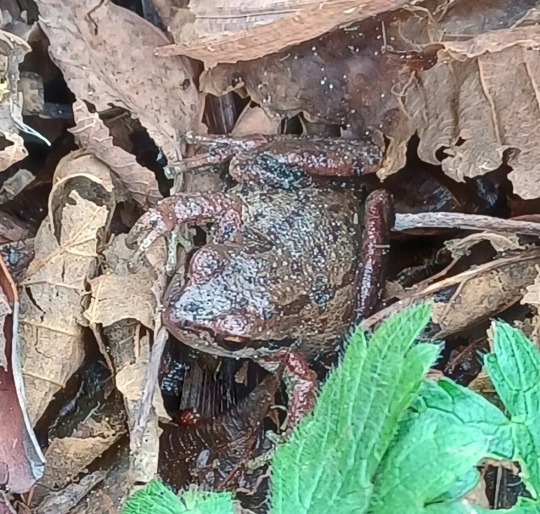

I spent part of yesterday helping a couple of friends with some much-needed yard work in preparation for spring. No, these aren't the friends in question--they're two frogs I ran across in the process! On the left is a northern red-legged frog (Rana aurora), while the green one on the right is a Pacific tree frog (Pseudacris regilla). Both are quite small, under two inches long.
I felt bad for disturbing them, but with temperatures in the fifties it was warm enough they could relocate themselves to someplace safe before nightfall. (The yard is full of all sorts of great little hidey-holes if you are a small critter.) And all the debris that was picked up just ended up in the compost heap, so any invertebrates hiding there would still be safe, since nothing gets bagged up or burned.
I want to say spring is here early, but we're getting a cold front moving in early next week, so it'll be time to batten everything down again. Still, we're due for much milder conditions than lots of other folks this time of year, so I'm not complaining.
#frog#frogs#amphibians#northern red-legged frog#pacific tree frog#vertebrates#wildlife#animals#wild animals#Anura#anurans#batrachians#nature#ecology#biology#zoology#herpetology#herps
47 notes
·
View notes
Text
Happy Newt Year!
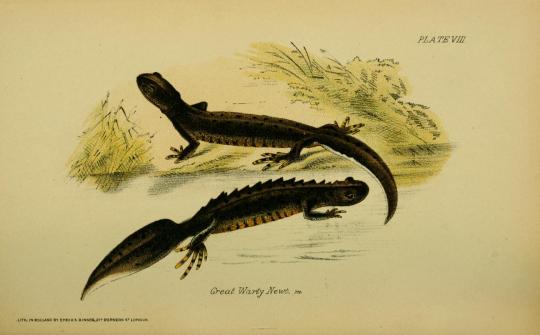
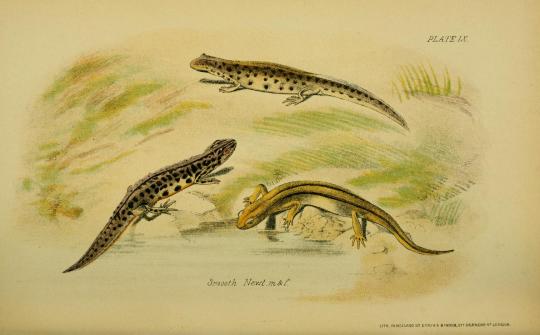
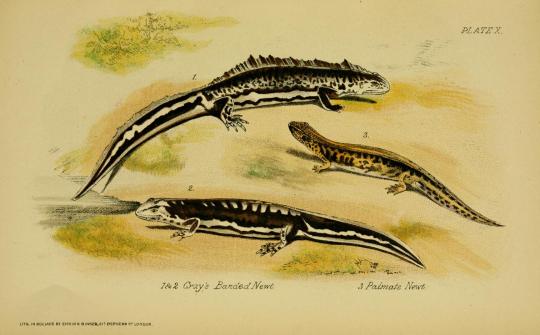
Plates XIII. IX, and X from Our reptiles and batrachians; a plain and easy account of the lizards, snakes, newts, toads, frogs and tortoises indigenous to Great Britain by M. C. Cooke (1825-1914)
London, 1893
Biodiversity Heritage Library
#animals in art#european art#19th century art#illustration#natural history art#scientific illustration#newt#newts#British art#book plate#lithograph#Happy New Year#Happy Newt Year
172 notes
·
View notes
Photo

🐊 Reptiles and batrachians London, J. M. Dent & sons, ltd.:[1914]
64 notes
·
View notes
Text
ribbit ribbit let's destroy linneaus some more
thanks to @quark-nova for the excellent clade options
205 notes
·
View notes
Text
Why defining "birds" precisely is hard
(A reply to @lyxthen-reblogs that got too long and is now its own post)
A long time ago (in the 1700s), we didn't really have any idea of how birds came about - evolutionary theory itself would have to wait another century! And, we didn't have knowledge of extinct species either, or even of the fact extinction was a thing. Carl Linnaeus, when setting up the first taxonomical classification of life, grouped modern birds in the class Aves. Mammals were grouped in Mammalia, reptiles, amphibians and cartilaginous fish in Amphibia, bony fish in Pisces, arthropods in Insecta and all other animals in Vermes.
This first classification was pretty crude, and, around 1820, scientists like de Blainville and Latreille began distinguishing reptiles from "batrachians" as separate classes. De Blainville, pointing out similarities between reptiles and birds, labelled the former as "ornithoid" (bird-like) while amphibians were "ichthyoid" (fish-like). In 1825, Latreille fully separated amphibians (Batrachia, later Amphibia) from reptiles (Reptilia).
The first major turning point for taxonomy came in the next decades, as many fossils of now-extinct creatures were unearthed. In 1842, Richard Owen coined the term Dinosauria, then uniting the recently discovered Megalosaurus, Hylaeosaurus and Iguanodon.
But it wouldn't be until the 1860s that Darwinian evolution would highlight the flaws in the earlier understanding of separate classes. In 1863, Thomas Henry Huxley would suggest uniting birds and reptiles, creating the class Sauropsida the next year. Huxley was the first to suggest birds evolved from dinosaurs, comparing the recently-discovered Archaeopteryx (1861) with Compsognathus. As cladistics didn't exist back then, no attempt at precisely extending the definition of "bird" to extinct forms was made, even though Archaeopteryx was usually called "the first bird" (Urvogel).
Unfortunately, this hypothesis would be shelved for a whole century, leading to little progress happening in terms of understanding bird evolution. It wouldn't be until the 1960s and the Dinosaur Renaissance that the links between birds and dinosaurs would be rediscovered, with birdlike theropods like Deinonychus being unearthed. This would really accelerate with the discovery of extremely well-preserved feathered dinosaurs, starting with Sinosauropteryx in 1996.
With numerous fossils showing steps of a gradual dinosaur-to-bird transition, the question of defining the "first bird" came to be asked again. To try to answer this, Jacques Gauthier coined the clade Avialae in 1986 as all dinosaurs more closely related to modern birds than to deinonychosaurs. This included Archaeopteryx, which other authors used for an alternate definition of Avialae: "the smallest clade containing Archaeopteryx and modern birds".
Still, the conflict didn't end there. Fundamentally, there were many ways to extend Aves (as defined from modern birds) to past ancestors, and, in 2001, Gauthier and de Quieroz identified four. Avemetatarsalia, defined as any archosaur closer to birds than to crocodilians (including all dinosaurs and pterosaurs!). Avifilopluma, defined as any archosaur possessing feathers homologous to bird ones. Avialae, redefined as any dinosaur able to fly (and their flightless descendants). And finally, Aves or Neornithes, the crown-group (the last common ancestor of modern birds, and its descendants).
The issues were many. Avifilopluma became mostly useless as a definition as ornithischians, then pterosaurs, were found to possess filaments homologous with bird feathers. Virtually every bird-line archosaur (with the possible exception of the little-known aphanosaurs) could likely fit in this clade, and its content was too uncertain to be reliably used.
Meanwhile, Avialae had (and continues to have) three distinct definitions. Notably, the ability for flight itself proved to be a poor definition, as bird relatives (Maniraptora, including Deinonychus, Velociraptor, Oviraptor, and many other bird-like theropods) likely evolved flight several times, from the four-winged Microraptor to the bat-winged Yi qi. Truly, most maniraptorans were extremely bird-like: wings had evolved much earlier than flight itself, with even dinosaurs like Velociraptor sporting fully feathered wings despite being unable to fly.
So, what was left? The crown group Neornithes, a vaguely defined Avialae, a more extensive Maniraptora, the stem group Avemetatarsalia, and lots of confusion. Usually, Aves is taken today as referring to either Neornithes or Avialae, although Avifilopluma/Avimetatarsalia are also in use (for instance, the Sinosauropteryx discoverers used Avifilopluma, and considered it a bird).
But none of these definitions are inherently better or worse. They are all different ways of extending a definition made for modern creatures to have it apply to past ones.
50 notes
·
View notes
Text
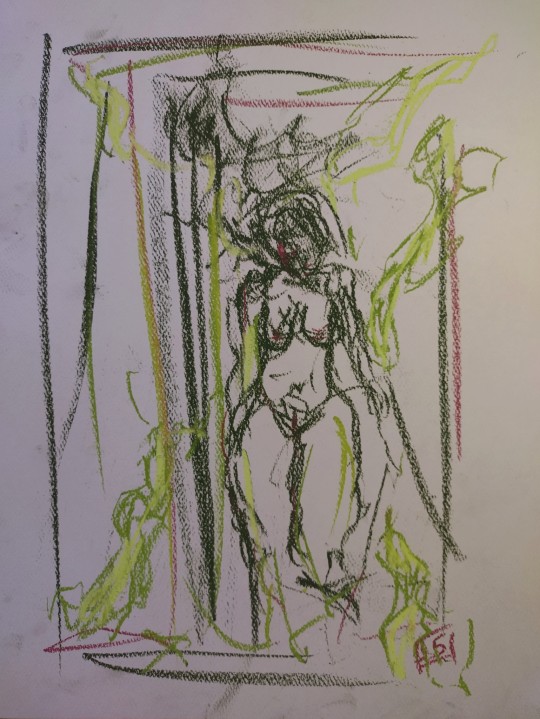
‘At the climax of the rite Lì shed her robe and, like a white shadow, incredibly reptilian, slithered over the rim of the tank. As her form clove the waters eight phallic feelers reached up and seized her. They engaged her in a multiple maithuna in which each tentacle participated in turn. Lì's hair, black as night, formed a slowly waving arabesque, each vivid tendril etched against the mauve-zone with Dalinian precision. The eightfold orgasm that finally convulsed her was registered by the votaries around the throne. Violent paroxysms displaced the black hoods, revealing bald shining heads and the protuberant eyes of the batrachian minions of Cthulhu.’
KENNETH GRANT
Describing a New Isis Lodge magical rite, from Hekate’s Fountain
24 notes
·
View notes
Note
What about,,,John Carpenter's The Thing? What would a hivemind shapeshifting extraterrestrial be like if it was a yandere??

A/N: Hi I’m back from hiatus. I just switched jobs and basically, it got real rough. Also, mental stuff. Posts will be slow, but I’m making my way downtown.
Sometimes, you wonder about the lives of those it has consumed. How could you not? The memories they held bled into its actions day in and day out. There were days where it was bouncing off the walls, and others where it was like trying to move a corpse.
Today, the thing brought you a dead Polar Bear, encompassed by what had to be the most extraordinary carvings in the snow that you’d seen to date. What creature did it have to consume to gain these skills? This culture of courting? This process of love?
You wonder vaguely what it will bring tomorrow. The alien was quite erratic. There were days that you would almost forget you weren’t talking to a human and days where gazing upon The Thing had your mind twisting to comprehend what your eyes were seeing. The Thing was just as unpredictable in behavior as appearance. What remained universal, however, was how damn clingy it was, and for horrifying reason.
You are so cold even shielded partially by the overhanging cave it’s dragged you in. Reluctantly, You give into the warmth of the monstrosity before you. Many, amphibian, (or were they batrachian?) limbs curl tightly to your skin and you are left wondering if today or the next is the day you will finally wake up and be looking through its eyes instead. Would you be alone? Would you see all the others it has consumed?
Rarely is it’s appearance the same each day or even passing hour. Even it’s behavior changed depending on what person’s memories it was drudging up. Or alien’s. There were days The Thing took on an entirely extraterrestrial appearance, and others entirely recognizable ones. It was beautiful, horrible and unknowable all in one. But always, you were next to a force of hunger. One that was seriously beginning to see the cons in holding back on taking your mind, body, and soul for itself.
#the thing#yandere alien#yandere#obsession#assimilation#alien#the thing is like#every Yandere trait#so good luck with that
210 notes
·
View notes
Photo

[The Batrachian Barf Bowl: An authentic research experience using ecological data from frog diets]
Larson et al. (2022)
139 notes
·
View notes
Text




I'm making industrial quantities of batrachians in 3D
That's because one: I love frogs\Toads, and two: I'm practicing
I plan on making anime figures. Mostly for myself but maybe if people like them I'll make garage kits with them idk.
11 notes
·
View notes
Text
'A Short Disquisition Concerning Toad-lore'
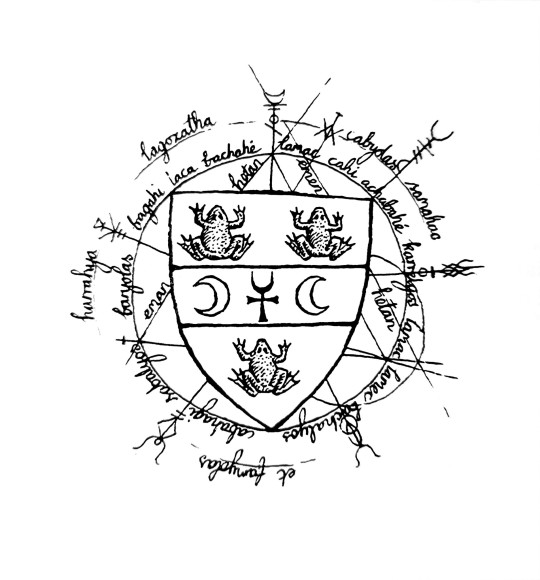
"That remarkable native amphibian, the toad or paddock (Bufo bufo), has a longstanding and celebrated association with witchcraft in the British Isles and Europe, especially as a familiar-spirit. The reasons for the importance of the toad in mediaeval witchlore must ultimately be sought in esoteric folk-symbolism, mythopoetics and the psychopharmacology of rural sorcerers and hexe-wives.
The totemic significance of the toad in witchcraft is primarily due to it's intimacy with the subterranean marshes, caves and dark waters of Annwvyn. Thus the toad is a dweller in the fens of the underworld and is especiall holy to the chthonic divinities. The toad is equally at home in the waters or on solid land, passing at will from one realm to the other just as the witch-shaman crosses the boundaries between this world and the underworld. The toad, therefore is a shamanic creature, considered symbolically, who epitomises passage between the dimensions. In this respect it should be remembered that in the Celtic world-view, marshy pools and linns were entrance points to the lower world, the great below.
At the initiations of Basque witches new devotees were marked by the Devil or Horned God with the sign of the toad or toad's foot. In mediaeval lore the heraldic crest of the Devil was held to consist of three toads emblazoned on a shield, affirming the link with the powers of the netherworld. A toad hopping over a person's foot is an ominous sign of impending death. An old Mantuan name for the toad is 'fada' or 'faery', emphasising it's otherworldly nature. In the Pyrenees it was said that witches could be recognised by an image of a frog's foot in their left eye.
The witch-trials particularly highlight the toad's function as a familiar-spirit. In the Basse-Pyrenees new witches were given toads by the Dark One. At Windsor in 1579 it was reported that "one Mother Dutton dwellyng in Cleworthe Parishe keepeth a Spirite or Feende in the likeness of a Toade, and fedeth the same Feende liyng in a border of greene Hearbes, within her Garden, with blood....." Similarly in Essex a witch in 1582 was held to own "two spirits like Toades, the one called Tom, and the other Robbyn" which she had inherited from her mother. Seventeenth Century French witches were accused of possessing 'petit Diableteaux' in the form of toads. The Italian witch Billia la Castagna in 1365 kept a large toad under her bed whose excrement was used in potions. This last detail is very significant as it is actually a cryptic reference to 'toad-stools' or visionary fungi used in witch-practices, usually of the Fly Agaric species. All across Europe there occur folk-names forcertain mushrooms which link them with toads such as Crapaudin in French.
In Slavic countries inedible mushrooms are called Zabaci Huby - "toad- mushrooms". The folk-affinities between hallucinatory fungi and toads point to an ancient awareness of the presence of psychotropic toxins in the skin of the latter. Toads secrete a fluid from their skin which contains the indole alkaloid bufotenine. Bufotenine was extracted from the glands of toads in ancient China and the traditional witches of Europe were well-acquainted with the propertiesof this batrachian elixir.
The witch-covens of north-western Spain in the 16th Century used toads' blood in their flying ointments. In 1525 Maria of Ituren confessed to having concocted a flying-salve from toad-skins and water-plantain, no doubt mingled in an oily base. Swedish witches compounded their salves with toads' fat and snake-foam along with poisonous herbs. German covens reputedly fried the toads to prepare such ointments and toad-grease salves were also utilised by witches in Hungary and Easter Europe to attain the ecstasy of 'spirit-flight'.
The toad is also famous for bearing within his head the Toadstone, a magical gem which healed all bites and stings and which, when set in a ring, grew paler in the presence of poison. In 'As you Like It' Shakespeare makes his well
known reference to the Toadstone:- "the toad, ugly and venomous, wears yet a precious jewel in his head".
This casts light on the emblem of the Black Toad in later Hermetic/alchemical literature as a glyph representing the 'earth of the philosophers' or 'first matter' which conceals within itself the wondrous Stone of the Wise.
In rural regions of England, such as Cambridgeshire, there operated a secret guild of men called the Toadmen who were reputed to exert a magical influence over horses. The Toadmen, like the secret society of the Horseman's Word, preserved many of the mysteries of the masculine side of the Craft of the Wise, honouring Old Hornie as the Master of the Beasts. To become a Toadman and gain the power a certain bone had to be obtained from a toad which was fixed to an anthill until the skeleton was entirely clean and devoid of flesh. The initiate then carried the bones in a pocket until they dried. On the stroke of midnight on the night of the full moon he cast the skeleton into a running stream: one bone would screech as it separated and floated downstream and this, when secured, conferred the supernatural powers of the Toadmen upon the bearer. Sometimes the new initiate had to take the bone to a stable or graveyard for three consecutive nights on the third night the Devil (Horned God) would appear and make a last attempt to trick the Toadman into parting with his bone as the final test of his shamanic initiation. According to some reports Charles Walton who was foully murdered in Lower Quinton, Warwickshire in 1945, was reputed by villagers to breed natterjack toads and use them in his magic - his garden was apparently thickly populated by them at the time of his death.
Toadmen were known to be practising their arts in Cambridgeshire as late as 1938 and it is not impossible that the cult may have survived clandestinely into the present day under a close shroud of rural secrecy. The toad's fertility aspects are to be clearly seen in the practices of the Auldearne coven in 1662 who performed a curious ceremony in which toads drew a plough made from the horn of a castrated ram with couch-grass for the harness. The coven went several times round a field with the toads 'praying to the Devil for the fruit of that land'. This seems to be a fragment of an ancient geomantic ritual to enhance telluric fertility. The classical author Pliny described how a toad should be placed in an earthenware pot and buried in a field to magically protect the crops from storms.
The Slavonic vampyre could appear in the guise of a frog and the paddock features heavily in [Romani] lore and tradition as a form of the Devil whose [Romani] name, Beng means “frog-like”. In Transylvanian [Romani] mythology the Queen of the Faeries lives in her remote mountain castle in the shape of a golden toad.
The recondite arcanae of toad-lore can be seen to illuminate the moste esoteric recesses of the Craft of the Wise as one of it's cardinal totemic symbols. It is thus fitting that the contemporary seeker again learns the marshland lore of the paddock as the People of the Toad did in times
past. It would seem prudent to hearken once again to his oracular croaking amidst the reeds at twilight and to pay heed to the chthonic wisdom from the haunted fens of Andumnos."
—
Call of the Horned Piper
by Nigel Aldrcroft Jackson
#call of the horned piper#nigel aldcroft jackson#witchcraft#traditional withcraft#toad lore#toad#Paddock#toadmen
123 notes
·
View notes
Text
Blood Lurcher
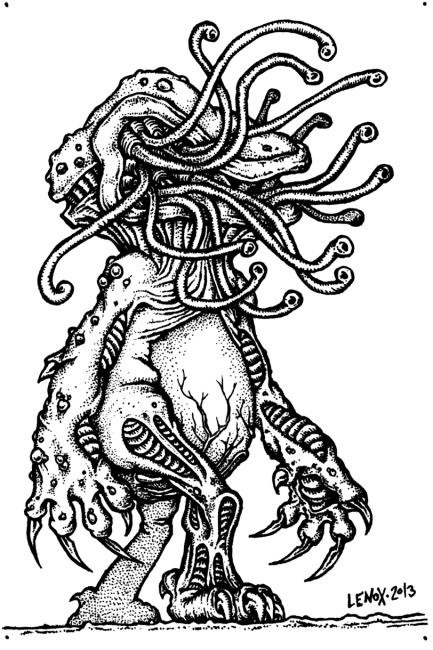
Image © Jason Lenox
[The blood lurcher originally appears in the Fighting Fantasy book Beneath Nightmare Castle. My ecology is partially original, and partially inspired by the version in Beyond the Pit. There, it’s said to be a free living larva that grows to full size after drinking somebody dry, but that doesn’t take into account its weird, torn apart from the inside look. My version makes it a weird parasitoid, which is a trope I love regardless.]
Blood Lurcher
CR 6 NE Aberration
This pallid creature is bipedal, with clawed paws on all four limbs. Its head is roughly batrachian, only it has split open, a mass of red tentacles tipped with lamprey maws emerging from it.
Blood lurchers are strange blood feeding creatures with a parasitic life style. As juveniles, they are a reddish, lamprey-like worm, which feeds on small animals and attempts to be eaten by a giant amphibian of some kind, sapient or not. In the amphibian’s gut, it spreads like a cancer, overcoming the nervous system of the creature, warping its body through hormonal secretions, and bursting a mass of feeding appendages from the poor creature’s mouth. In this stage, it feeds entirely on blood, tearing prey open with its claws and sipping from the open wounds. When the blood lurcher is well fed, it can release some of its feeding tendrils by budding, and the cycle continues.
Understandably, most humanoid amphibians find blood lurchers even more loathsome than other peoples do. Grippli and sivs destroy blood lurchers on sight. Particularly sadistic boggard tribes may keep a blood lurcher around as a punishment for those who fail their chief, but this runs the risk of the blood lurchers reproducing out of control and replacing the whole tribe. They are most commonly found in marshes, swamps and floodplains, but sometimes wander into caves or even ruined cities in search of prey.
Blood Lurcher CR 6
XP 2,400
NE Medium aberration
Init +5; Senses darkvision 60 ft., Perception +6, scent
Defense
AC 19, touch 12, flat-footed 17 (+1 Dex, +1 dodge, +7 natural)
hp 67 (9d8+27)
Fort +6, Ref +4, Will +7
Offense
Speed 20 ft., lurch
Melee 2 claws +8 (1d8+2), 4 tentacles +6 (1d4+1 plus bleed)
Special Attacks bleed (2 points), cumulative bleed
Statistics
Str 15, Dex 13, Con 16, Int 5, Wis 12, Cha 8
Base Atk +6; CMB +8; CMD 20
Feats Blind-fight, Dodge, Improved Initiative, Multiattack, Skill Focus (Stealth)
Skills Climb +7, Perception +6, Stealth +10, Swim +11; Racial Modifiers +4 Swim
Languages Boggard (cannot speak)
SQ hold breath, marsh movement
Ecology
Ecology any swamps or underground
Organization solitary or pack (2-6)
Treasure incidental
Special Abilities
Cumulative Bleed (Ex) Bleed damage dealt by a blood lurcher stacks with itself. Regardless of how much bleed is being dealt, it is healed with a single successful Heal check or cure spell.
Lurch (Su) Three times per day, a blood lurcher can move up to twice its speed as a swift action.
Marsh Movement (Ex) A blood lurcher ignores difficult terrain from water, mud, vegetation or other natural terrain features of swamp environments.
Tentacles (Ex) The tentacle attacks of a blood lurcher deal slashing damage.
32 notes
·
View notes
Photo

Triassic stem caecilian supports dissorophoid origin of living amphibians
Ben T. Kligman, Bryan M. Gee, Adam D. Marsh, Sterling J. Nesbitt, Matthew E. Smith, William G. Parker & Michelle R. Stocker
Abstract
Living amphibians (Lissamphibia) include frogs and salamanders (Batrachia) and the limbless worm-like caecilians (Gymnophiona).
The estimated Palaeozoic era gymnophionan–batrachian molecular divergence suggests a major gap in the record of crown lissamphibians prior to their earliest fossil occurrences in the Triassic period.
Recent studies find a monophyletic Batrachia within dissorophoid temnospondyls, but the absence of pre-Jurassic period caecilian fossils has made their relationships to batrachians and affinities to Palaeozoic tetrapods controversial.
Here we report the geologically oldest stem caecilian—a crown lissamphibian from the Late Triassic epoch of Arizona, USA—extending the caecilian record by around 35 million years. These fossils illuminate the tempo and mode of early caecilian morphological and functional evolution, demonstrating a delayed acquisition of musculoskeletal features associated with fossoriality in living caecilians, including the dual jaw closure mechanism, reduced orbits and the tentacular organ.
The provenance of these fossils suggests a Pangaean equatorial origin for caecilians, implying that living caecilian biogeography reflects conserved aspects of caecilian function and physiology, in combination with vicariance patterns driven by plate tectonics.
These fossils reveal a combination of features that is unique to caecilians alongside features that are shared with batrachian and dissorophoid temnospondyls, providing new and compelling evidence supporting a single origin of living amphibians within dissorophoid temnospondyls.
Read the paper here:
https://www.nature.com/articles/s41586-022-05646-5
6 notes
·
View notes
Photo
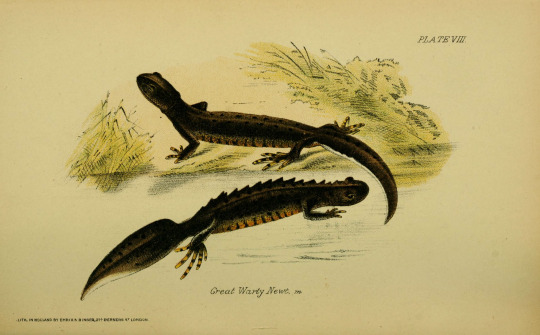
🦎 Our reptiles and batrachians London, W. H. Allen & co., limited, 1893. Frogs aren't the only things that are warty! The Warty Newt is the largest & least common newt in the British Isles
9 notes
·
View notes